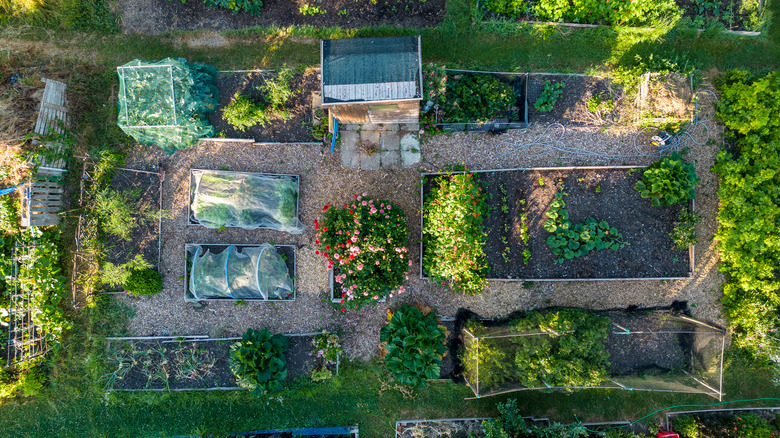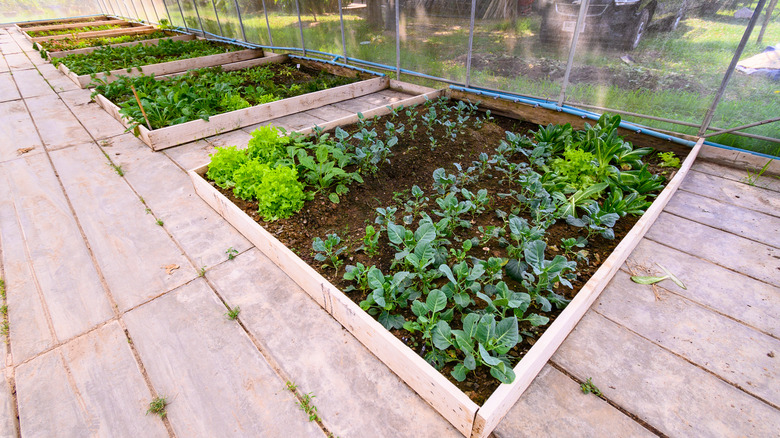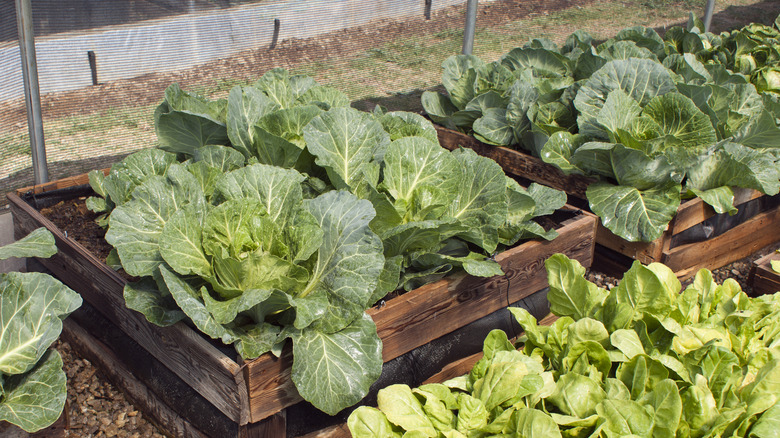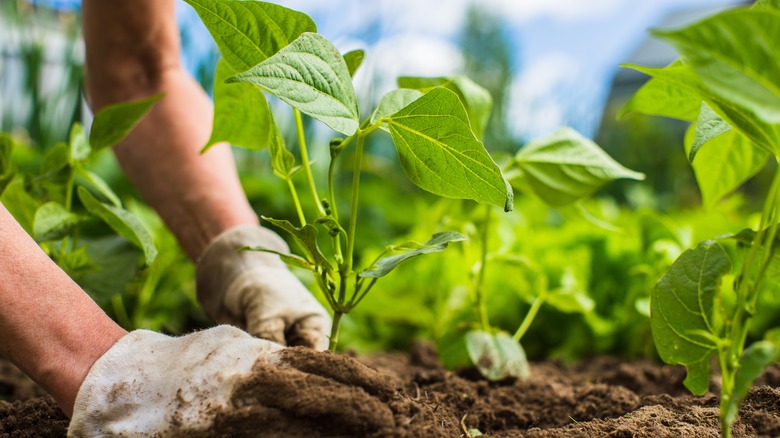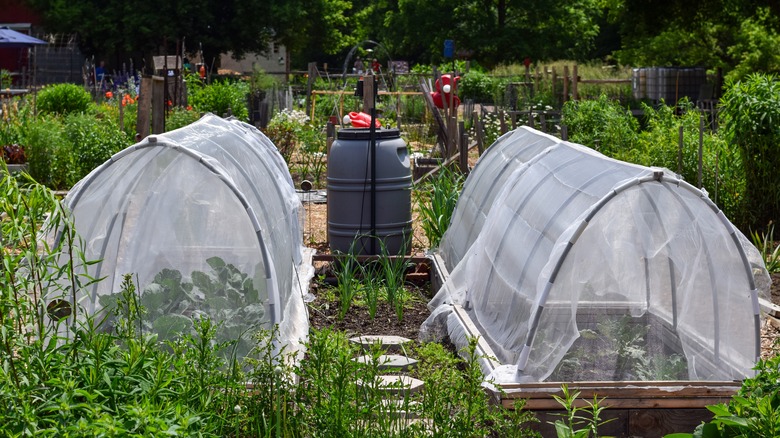How To Correctly Map Out And Space Your Garden Veggie Plants
Whether this is your first garden or your hundredth, it's always a good idea to start with a map so you can go into the growing season with a plan. Mapping out your veggie garden on paper helps you maximize the space you have, plan ahead for potential problems, and ensure each plant is in the best possible location to thrive and produce a high yield.
The basic goal of your map is to help you choose the best site and get a realistic sense of how many plants you can fit without overcrowding. This way, you know how many seeds to start or how many plugs to buy of each kind.
To do that, grab a piece of paper and get ready to start sketching out your garden. You'll need to factor in a lot of details like light conditions, the orientation of your garden beds, and the kind of pests or problems you're most likely to deal with. It might seem like a lot, but if you take it one step at a time, you'll have a solid map that will help your veggie garden get off to the best possible start.
Create a sun map
Choosing the location for your vegetable plants is the first step to mapping out and planning your garden. To do that, you need to know how much light each part of your yard gets throughout the growing season. Most veggies will need full sun to produce a good harvest.
To do this, start by drawing a rough map of your yard. It doesn't have to look like a work of art. It just has to make sense to you. Set a timer on your phone to go off every hour or two. When it goes off, go out and mark on your map which areas are currently getting sunlight, using a marker or crayon. Each time you go out, use a different color to circle the areas that are currently getting sun. Once the sun has set, review your map and identify areas that get the best amount of light for the plants you want to grow.
For shady yards or gardens where the full sun areas don't make sense for a veggie garden, sun mapping can still help you find the best possible location that fits with your design plans. It can also help you anticipate future problems. If you know your veggie garden is only going to get about four hours of light each day, you can adapt by choosing veggies that can tolerate some shade.
Sketch out your plant layout
Figuring out where to place your veggie plants will depend on each plant's light needs, mature size, and watering needs. Make sure you account for each detail before sticking seeds or plugs in the ground by sketching out the best layout for your garden first. To start, arrange your plants by the height they will reach at maturity. Put the tallest veggie plants on the north side of your garden bed and the shortest on the south side. This prevents tall plants from shading out shorter pants, ensuring everyone has access to the light they need.
If you have multiple beds, you can maximize the space and performance by inter-planting different species in each bed. Instead of a patch of just tomatoes, for example, you could plant one or two rows of tomatoes on the north side of each garden bed. Then plant a row of smaller, faster-growing vegetables like spinach or beets. Mixing your bed in this way helps maximize the space while also providing some insurance for your crop. If the tomatoes in one area become diseased or overwhelmed by pests, it'll be easier to contain the problem before it spreads to the rest of your tomato plants.
Finally, factor in water needs. You don't want a plant that prefers dry conditions sitting right next to one that needs constantly moist soil. To make your daily watering routine easier, keep plants with similar moisture requirements near each other.
Get the spacing right
Now that you know how you're going to arrange the different species you're planting, it's time to do the math on how many individual plants of each species you can fit in your garden. Plant spacing is a delicate balancing act. If you overcrowd them, competition for space and resources can stunt the growth. Overcrowding can also make it easy for diseases and pests to quickly overtake your entire crop. But if you space them too sparsely, you're inviting weeds to fill in the bare space between them. It also puts you at risk of a disappointing harvest, in the event that the few plants you grew end up producing very little.
With that said, it's better to err on the side overcrowding than sparse planting — especially if you plant a diverse mix of species together. Often, you will find the recommended spacing written on the seed packet or plug tray of your veggie plants. In general, you want to go with the minimum spacing recommendation listed, rather than the maximum. Planting closer together helps shade the soil, blocking weeds and improving soil moisture retention.
If you're starting from seed, sow even closer together than the minimum recommendation. As they sprout, you can thin seedlings for a bigger harvest by plucking out the weaker ones.
Incorporate timing into your maps
There are two key ways that time factors into your garden map. First, vegetables typically fall into two categories: cool-season and warm-season crops. Cool-season crops thrive best in the cooler weather of either spring or fall. Warm-season crops, conversely, do best in the consistent warmth of summer. If you plan accordingly, you can get multiple harvests out of a single garden — starting with a bed of cool-season crops and finishing with a batch of warm-season crops.
The second way to factor in time is in growth rate. Some veggies take longer to grow and ripen than others. You can use this to plant more densely without overcrowding your plants. For example, tomatoes can take as long as 90 days from planting to produce fully ripe tomatoes. Meanwhile, spinach is one of the fastest-growing vegetables. It can be ready to harvest in 45 to 60 days. As a result, you can plant spinach closer to tomatoes than typically recommended because you'll be able to pull it out before the tomatoes have reached maturity.
Design for pest control and weather
In addition to mapping out the veggie plants you hope to grow, use this phase to plan ahead for the most common issues gardeners face in your region. In extremely hot climates, this might mean incorporating shade cloth to filter the sun, even though common wisdom states that most veggies need full sun. If you're in a flood-prone area, it could mean mapping out swales or incorporating water capture and storage systems to flood-proof your garden.
For pest control, you can plan for a mix of trap crops and repellant plants. Trap crops – or decoy crops — are essentially a separate plot with the same plants you put in your veggie garden. You can then fence off or net your real garden while leaving the trap crop exposed. Pests will usually opt for the easier to access option. Repellant plants work as natural pest control by emitting a scent or flavor that pests don't like. If garlic is on your list, this doubles as an excellent repellant plant. Arrange your beds so that your onions and garlic form a border around your other veggies.
Since this step really depends on where you are and the issues you're most likely to face, you'll need to do some additional research to figure out what design features your garden needs. Talk to other gardeners or contact your local extension office to get advice tailored to your garden.
